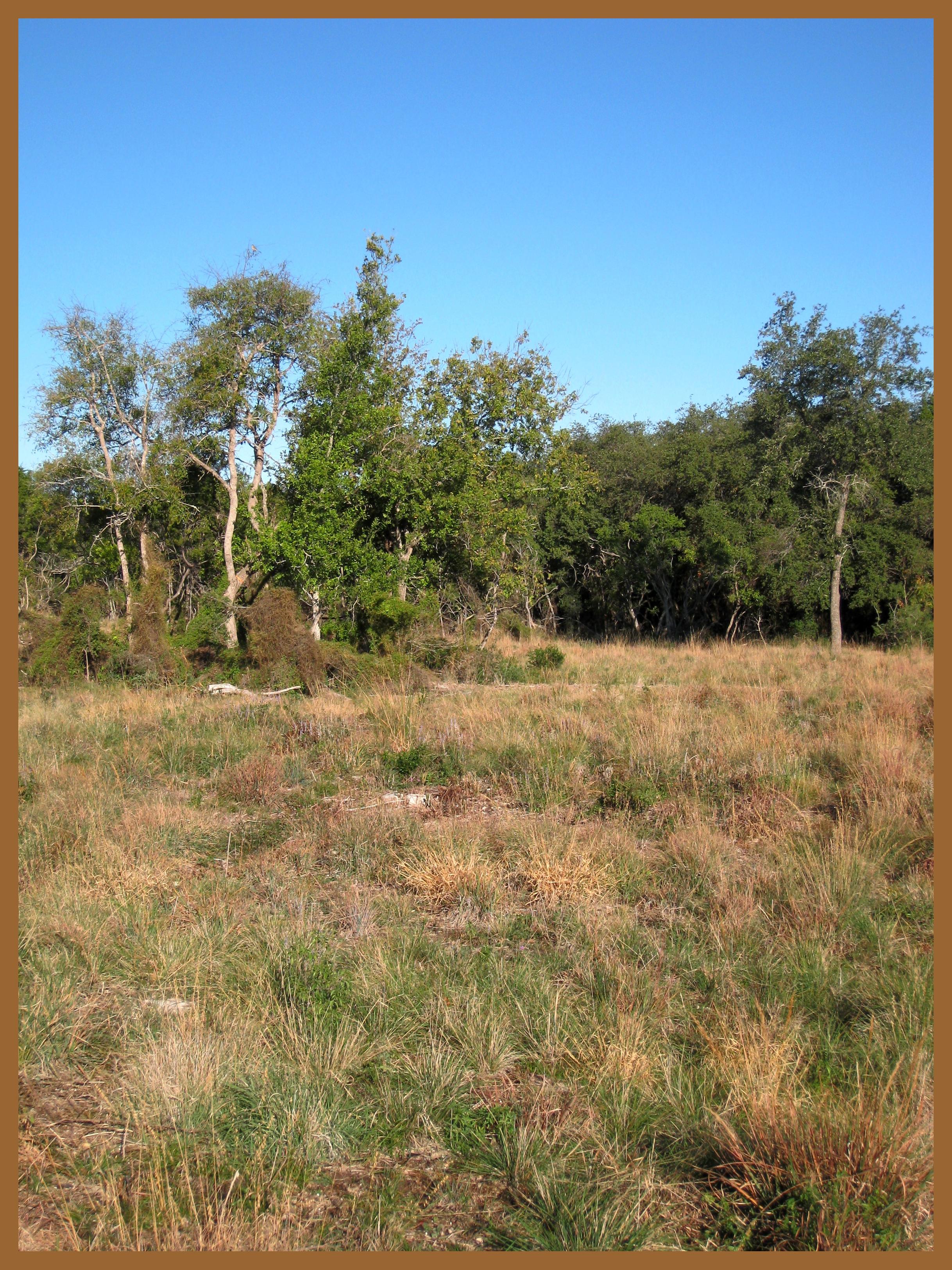Guide to SA Natural Areas & Greenway Trails
K: SAVANNA RESTORATION

Phil Hardberger Park three-acre savanna restoration photographed by Barbara Schmidt
Written by Alamo Area Master Naturalist Stan Drezek from materials supplied by Wendy Leonard and Fred Wills.
“A savanna is a grassland ecosystem characterized by the trees being sufficiently small or widely spaced so the canopy does not close,” according to Wikipedia. Savannas tend to be found between tropical rainforest and desert biomes. The open canopy allows light, which supports an understory of grass and herbaceous plants. Surprisingly, approximately 20% of the earth’s land area is savanna.
PHIL HARDBERER PARK WAS A SAVANNA
Prior to the onset of ranching in our area in the 1850s, the majority of Phil Hardberger Park was savanna. The Texas savanna, like most savannas, tends to get most of its rain during summer. In Bexar County we have a Live Oak-Ashe Juniper savanna whose perennial grasses include Little Bluestem, Curly Mesquite, and Buffalo Grass. Cacti are also common. Before the introduction of dairy farming in 1910, Phil Hardberger Park had only 15-30% tree canopy, according to estimates. Now it is roughly 66-98%. What a difference! Looking at our restored savanna, what percentages of tree canopy and open land would you estimate?
SAVANNA DESTROYERS: OVER-GRAZING, FIRE SUPPRESSION, & NON-NATIVES
Two actions over the past century changed the ratio: over-grazing and fire suppression. Fenced cows kept grasses short, reducing root structure. The active suppression of fires allowed woody plants to proliferate. In addition, droughts proved even more damaging to short-rooted plants, which could not hold soil during periods of heavy rainfall. Erosion dramatically reduced the depth of nutrient-rich topsoil.
How did these actions change the landscape of Phil Hardberger Park? How does this area of savanna restoration differ from other areas of the park?
Another event affecting the original savanna was the introduction of non-native grass species such as King Ranch Bluestem and Bermuda Grass. These invasive plants have now become the dominant grasses in the non-restored grassland areas. In areas where fire suppression occurred, large stands of Texas Persimmon, Ashe Juniper, and Whitebrush now dominate the landscape. The result is decreased rain absorption, along with reduced native grass and herbaceous plant production. This is a dramatic change from the time when Native Americans set fires to keep woody plants in check and to allow tall grasses to flourish, sustaining bison, antelope, and other species.
RESTORING SAVANNA
The concept being evaluated in this three-acre trial restoration is that a reestablished savanna, with a large diversity of more than sixty native plant species*, will support a large insect population, along with numerous reptile, amphibian, bird, and mammal species. In a paper appearing in Forest Ecology Management in 2010, Catherine Mabry and co-authors found that restored savannas support the greatest diversity of bird species when the restoration site is in open country or at an edge, where forest canopy meets open range.
In the fall of 2012 park staff and community volunteers planted an additional nine acres of savanna. Park naturalists will evaluate the grasses and wildflowers as well as wildlife resulting from the restoration of savanna. If this new savanna does as well as the original three-acre piece, the savanna would be expanded to the thirty acres called for in the Master Plan.
How will park naturalists measure the success of restoration efforts in Phil Hardberger Park?
PHIL HARDBERGER PARK AND THE COMMUNITY
*Thousands of plants were placed in the ground through the efforts of 500 local volunteers in September 2009. What does this say about the value of Phil Hardberger Park to the San Antonio community?
Phil Hardberger Park three-acre savanna restoration photographed by Barbara Schmidt.

